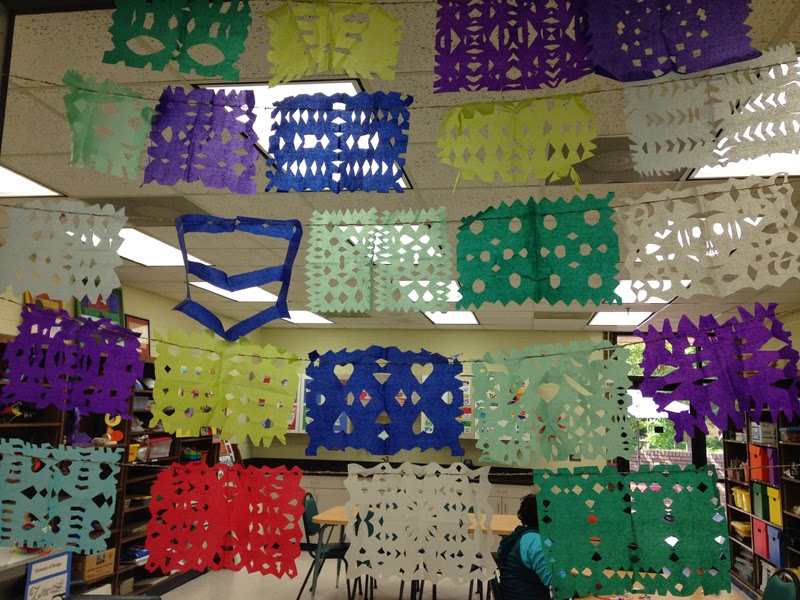Art and Social Studies pair perfectly in the classroom. In
March, when our town was exploding with Japanese Cherry Blossoms, I taught a unit on Japanese Art. Japan
is dear to my heart, having lived in Hokkaido for more than a year. I began by
teaching students about the culture: traditional food, dress, homes, gardens, religion, and
even some basic phrases. We handled artifacts and tried on a kimono.
I read “One Leaf Rides the Wind” which is a counting book of
haikus that teach about bonsai trees, pagodas, koi fish and tea ceremony. I
have students figure out the pattern of the haiku from my reading, and then
they write a haiku about themselves. They mount this under their name, written
with sumi brush and ink in katakana (Japanese characters). Younger children
decorated large koi fish wind socks I made from bulletin board paper.
We also used brush and ink to do some bamboo studies. I
managed to bring in fresh bamboo with leaves for students to feel and better
understand the brush strokes.
Japanese are famous for their wood cuts, and so we study
Hiroshige prints and talk about the printmaking process, before making our own
relief prints. I’m not comfortable giving visually impaired students carving
tools, so we just used pencils and foam to create our images and then brayer
and ink to edition them.
Greek Art is fun to teach, because the students love me to
read myths to them while they work. We listened to a documentary on ancient
art, used white sheets for over-clothes togas, and discussed the culture at length.
We looked at how and why our government buildings resemble those of Ancient
Greece, and I asked them to find each type of column capitol (Ionic,
Doric, Corinthian) in our community, which is flooded with neoclassical
architecture. Students used charts of
vase forms to create their own symmetrical, black-figure vase image, complete
with a stylistic narrative from their life.
I didn’t realize that Cinco de Maya was a bigger deal in the
U.S. then much of Mexico, until this year. I played the NPR story "Cinco de
Mayo: Whose Holiday Is It Anyway?" for my students, and we looked at images from
Mexican culture. Older students cut tissue paper which teaches use of negative
shape, balance, and pattern. (Saved scraps are great for collages and contact paper stained glass projects.)
Elementary school students filled plastic Easter Eggs from home with dry rice or beans, to create papier machie maracas, which they painted and played to mariachi music. This seemed to be a favorite project for some of my non-verbal students.






No comments:
Post a Comment